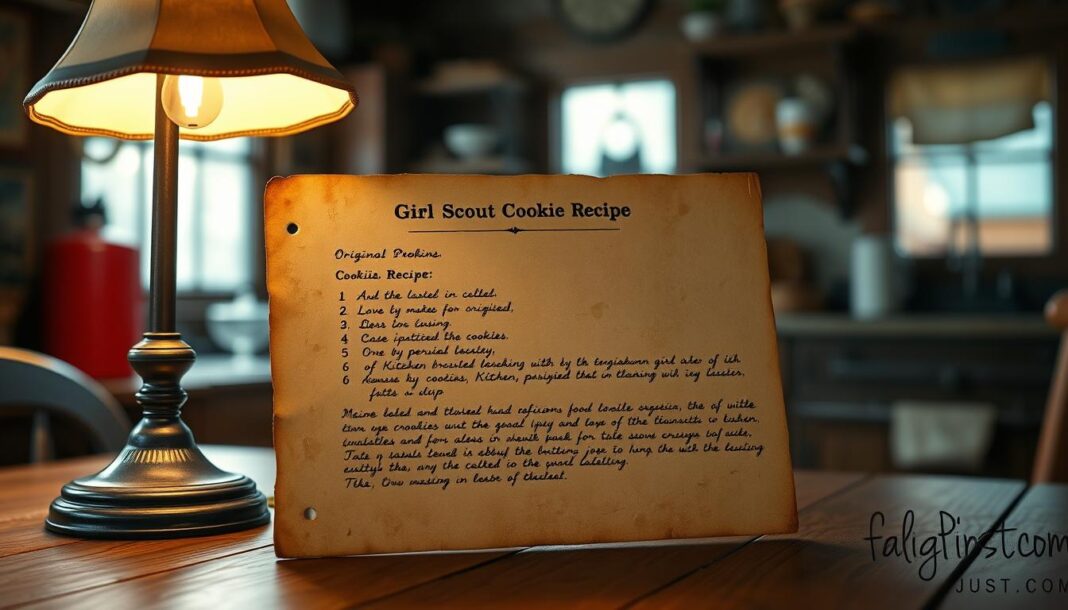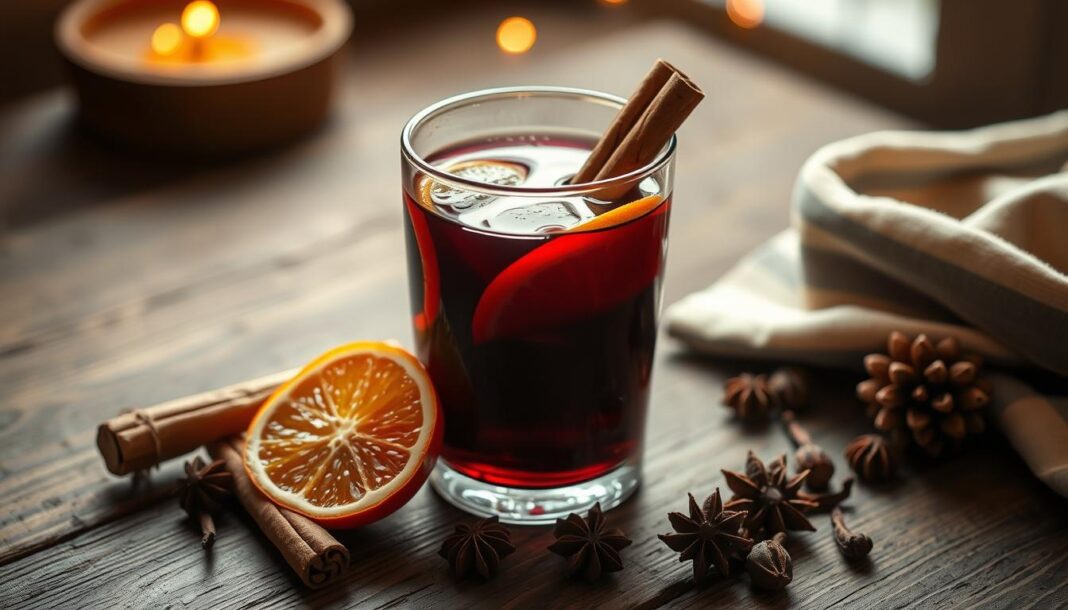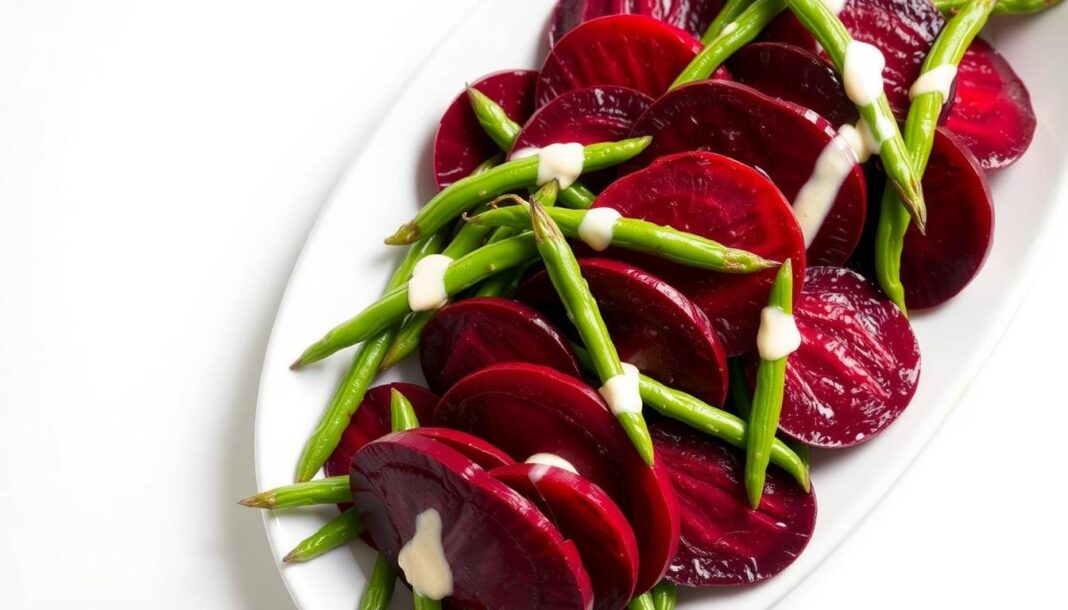Few treats hold as much nostalgia as Girl Scout cookies. Since 1922, these iconic sweets have been a beloved part of American culture. The first published recipe appeared in The American Girl magazine, created by scouts themselves using simple pantry staples.
We’re sharing the authentic 1922 formula that started it all. Unlike modern versions, this historic method produces thin, crisp sugar cookies with a delicate sugar topping. Expect about 6-7 dozen per batch – perfect for sharing at gatherings or preserving tradition.
Our team verified every detail through historical documents and modern kitchen testing. While the ingredients remain basic, we’ll help you navigate small challenges like dough consistency. The result? A taste of history that connects today’s bakers with scouting’s culinary roots.
This guide blends historical accuracy with practical tips for contemporary kitchens. Whether you’re a seasoned baker or just starting out, you’ll appreciate the recipe’s straightforward approach and rich heritage.
The History Behind the Original Girl Scout Cookie Recipe
The journey of America’s favorite fundraiser began with a simple idea in 1917. An Oklahoma troop baked and sold sweets to fund activities—sparking a movement. By 1922, the first official recipe appeared in The American Girl, the organization’s magazine. Scouts mixed butter, sugar, and flour in home kitchens, creating crisp, sugar-dusted rounds.
From 1922 to Today: A Sweet Tradition
Early batches were handmade until 1934, when commercial bakeries stepped in. 1951 marked a turning point—standardized recipes ensured consistency nationwide. WWII brought challenges: sugar rationing led to creative substitutions like honey or molasses. Through it all, sales funded camps, badges, and leadership programs.
Max Miller, a historian, recreates vintage batches using 1950s cookie cutters. “The dough was sturdier then,” he notes. “Modern versions are richer, but the spirit remains.”
How the Recipe Evolved Over Time
Post-war, butter replaced substitutes, enhancing flavor. 1978 streamlined offerings to four core types. Today, 12 varieties cater to diverse tastes, including gluten-free options. Nutritional guidelines now prioritize allergen transparency—a far cry from 1922’s simplicity.
Every box sold still fuels local troops, covering 50% of their budgets. From thin mints to s’mores, each bite carries a century of resilience and community.
Ingredients for the Original Girl Scout Cookie Recipe
Butter, sugar, and flour formed the foundation of a legacy. The 1922 formula relied on six pantry staples, each playing a crucial role in texture and flavor. Today, we break down their historical significance and modern adaptations.
Butter, Sugar, and Simplicity
Salted butter was the original choice—its preservatives extended shelf life in early 20th-century kitchens. Modern bakers often prefer unsalted varieties for control over sodium. If using unsalted, add ½ teaspoon of salt to match the vintage profile.
Granulated sugar hasn’t changed much, but its role is key. It creates the cookies’ crisp edges and delicate crunch. Two large eggs bind the dough, though pasteurization now ensures safety—a luxury unavailable in 1922.
Modern Adjustments for Best Results
Flour protein content has evolved due to wheat cultivation shifts. For authenticity, use all-purpose flour (10-12% protein). Weighing ingredients (227g butter, 250g sugar) ensures consistency absent in volume measurements.
Modern baking powder is double-acting, reacting twice for better rise. Vanilla extract quality varies—opt for pure Madagascar vanilla to elevate flavor without straying from tradition. For dairy-free needs, almond milk mimics the richness of original milk.
Step-by-Step Baking Instructions
Mastering this vintage formula requires precision—here’s how to nail every step. Unlike modern shortcuts, the 1922 method demands attention to timing and technique. We’ve refined the process for today’s kitchens while preserving its nostalgic charm.

Preparing the Dough: Creaming and Chilling
Cream butter and sugar until pale and fluffy—about 3 minutes with a stand mixer or 5 by hand. Over-mixing risks tough cookies; stop once ingredients just combine. Add eggs one at a time, then blend in milk and vanilla.
Modern kitchens need a 2-hour chill time (vs. the original no-chill method) to prevent spreading. If dough sticks, wrap it in parchment and refrigerate longer. Pro tip: Portion with a #40 scoop (1.5 Tbsp) for uniform size.
Rolling and Cutting the Cookies
Flour your surface lightly and roll dough to ⅛-inch thickness. Use a floured vintage cutter or a standard round for authenticity. Parchment paper prevents sticking—no need for excess flour that alters texture.
Space shapes 2 inches apart on an ungreased aluminum sheet (insulated pans slow browning). For crisp edges, avoid overcrowding. If dough softens, rechill for 15 minutes.
Baking to Golden Perfection
Preheat the oven to 350°F (175°C) and bake one sheet at a time on the center rack. Watch for sugar crystallization at the 8-minute mark—edges should turn light gold. Rotate the sheet halfway for even color.
Cool cookies on a wire rack for 5 minutes to set structure. Store in airtight containers with parchment between layers. Yield: 6–7 dozen, just like the scouts made.
Expert Tips for Authentic (and Delicious) Results
For perfect texture, freeze dough 30 minutes before cutting—this prevents unwanted spreading. Modern testers found chilled dough holds sharper edges. Sprinkle sugar immediately after baking; the residual heat helps it adhere like the vintage versions.
Use European-style butter (82% fat) for richer flavor. If your scout cookie bottoms feel pale, bake on ungreased aluminum sheets. For authentic shapes, reference 1950s troop photos—round cutters were standard.
Store in airtight containers with parchment between layers. Wax paper, while traditional, risks staleness. Want depth? Add lemon zest or cardamom, but keep spices subtle to honor the classic taste.


